Australian Rock: The Fifties
‘The public for pop in the years 1954 to 1964 created a new social order which changed the fabric of life and the course of the century …
‘It was not merely a case of roll over Beethoven, more the almost entire rejection of an inheritance of style, taste, manners, behaviour and ethics in the pursuit of change.’
— Bob Rogers with Denis O’Brien,
Rock ‘n’ Roll Australia — the Australian Pop Scene 1954-64 (Cassell Australia, 1975).
Australia in the early 1950s was an ordered, sedate and rather isolated place. Conformity was the prevailing attitude and social dissent was virtually unknown. The Second World War still loomed large in the public consciousness and after such a period of upheaval the overwhelming majority of families were happy with a life of peace and quiet. After the Korean War of the early ’50s the Petrov Affair of 1954 refocused attention on the Cold War and reinforced Australia’s position in the Western Alliance. Eighteen year-olds did their two years of National Service without complaint.
There was no television. Radio played the classics, radio drama or ‘light entertainment’. Newspapers and magazines were also very much adult in tone. It was down to the movie theatre to herald the-arrival of a new form of music that would spark a youth revolution.
Blackboard Jungle, a movie about a school teacher trying to handle a bunch of nasty New York tearaways, would probably be long forgotten if director Richard Brooks hadn’t included a performance by Bill Haley and his Comets. Their celluloid rendition of Rock Around The Clock sent shockwaves around the world. The Australian censor snipped out 165 feet of ‘violent classroom scenes’ before it was screened here in late 1955, but it was the music that had the greater impact.
At the time Johnny O’Keefe was a 20-year-old doing occasional performances based on the highly emotional stage show of American crooner Johnny Ray. The effect of Haley’s rocking sound on O’Keefe was dramatic. ‘It really freaked me out like nothing I’d heard before,’ O’Keefe recalled later. ‘I told myself I had to get amongst this rock ‘n’ roll stuff, so for a while I started impersonating Bill Haley,’
There was as yet no structure that the young O’Keefe could climb to the twin goals of fame and fortune. The radio stations ignored the new beat while Customs regulations forbade the private importation of records. All overseas recorded music had to first pass a Public Service inspection, in much the same way that films must be submitted to the Classification Board. There was very little recording of Australian artists by record companies.
The next step the music had to take was on a live level—a move that gave it a vigour and a strength that persisted in Australian rock.
O’Keefe collected a band of six former jazz musicians (they called themselves the DeeJays after the David Jones department store) behind him and stumbled towards a sound. The group started promoting their own dances at Stone’s Cabaret, Coogee, on Sydney’s southern beaches. Fights in the audience caused them to move to the Balmain Workingman’s Institute. More fights ensued, this time between Australian and Italian youths over girls.
At this point a most unlikely patron stepped in. The NSW Police Force, in the person of Constable Reg Dowton, suggested that O’Keefe and the band move to the more secure venue of the Leichhardt Police Boys Club. The police reasoned that it was better to allow this phenomenon to occur under their own watchful eye than sending a posse of paddy wagons out to the clubs every Saturday night.
It worked and soon J. O’K and the DeeJays were also playing weekly gigs at the Paddington Police Boys Club and Wollongong.
The fights were not inspired by alcohol in these early days. Rather it was rivalry over girls that got the fists swinging. ‘There was a lot of sex,’ O’Keefe remembered later. ‘You could say it was what became known as the permissive era.’
O’Keefe had his first foot on the ladder. The only problem was—the ladder was extremely small. It took a flamboyant American promoter to extend the horizon.
Lee Gordon had arrived in Australia in September 1953 with a discount selling technique that had already made him a small fortune in the States. He found Australia just as receptive and after setting the Sydney retail scene on its ear started looking for fresh challenges.
Gordon quickly noted the undeveloped state of live entertainment in Australia and formulated a plan to fly in package tours of American entertainers. For venues he lined up rundown boxing and wrestling arenas including the 11,000 seat Sydney Stadium.
The first of these tours in July 1954 featured jazz stars Ella Fitzgerald, Artie Shaw, Buddy Rich and comedian Jerry Colonna. It just broke even but set the pattern for what was to come.
The second Lee Gordon Big Show starred Johnny Ray. Ray had had a big impact in the States a few years previously but had drifted out of the limelight. Basically he was all Gordon could afford. When Ray arrived in Australia ticket sales were abysmal. But fast-footed promotional work by Gordon turned disaster into a triumph. He printed a million ‘twofers’, a ‘Two-Tickets-For-The-Price-Of-One’ voucher, stacked the first night audience full of freebies and watched in delight as Ray pulled out the performance of his life. ‘It was the most electrifying display of emotional showmanship I’d ever seen,’ recalled prominent DJ Bob Rogers.
The twofers were suddenly the hottest ticket in town and the rest of the tour was a sell-out.
Ray wasn’t a rock ‘n’ roller but he inspired the same wildness and hysteria that became associated with rock ‘n’ roll. His influence on the young O’Keefe was considerable.
The twin impact of television and Elvis Presley in 1956 made Australian youth really sit up. Television quickly brought the local entertainment scene under its gaze and talent shows all over the country were deluged by would-be Elvis’s. The rock ‘n’ roll structure was starting to emerge.
In late 1956 Lee Gordon was reeling from three straight touring disasters. While scouting for talent in the USA his ear was turned by the brash new beat blaring from jukeboxes. He decided to bring out a rock ‘n’ roll show.
There was no doubt in his mind who had to head it either—it had to be Bill Haley and his Comets.
Gordon signed Haley to tour in January 1957 and immediately started putting together a support bill. He signed Freddie Bell and the Bell Boys (a popular act at the time), plus Big Joe Turner and La Vern Baker. Bell and the Platters appeared in the movie Rock Around The Clock, Hollywood’s version of the start of rock ‘n’ roll.
The tour had an unbelievable impact. The first show in Newcastle sold out in an hour. More dates were hastily added and the whole tour sold out. The crowds screamed their heads off, but there were very few fights or other disturbances. If anything the tour seemed to unite teenagers.
Johnny O’Keefe managed to ingratiate himself with the tour party and struck up a friendship with Haley. Haley recommended O’Keefe to his local record company, Festival, and sent him a song to record, ‘You Hit The Wrong Note Billy Goat’.
O’Keefe announced to the press that he was going to sign to Festival. This was news to Festival’s A&R manager, Ken Taylor, who immediately rang O’Keefe. ‘What’s this about you signing to Festival?’ he asked. ‘Well, Bill Haley said it was pretty well certain,’ replied O’Keefe. Taylor gave O’Keefe an audition and was impressed by his drive and personality—although felt O’Keefe didn’t have a great voice. Still, O’Keefe got his contract, the first Australian rock ‘n’ roll performer to sign a recording contract.
The next step was to get on one of Lee Gordon’s Stadium shows. The opportunity wasn’t long in coming. In mid-1957 Gordon planned to tour another extravagant package—Little Richard, Gene Vincent, Eddie Cochran and Alis Lesley (billed as the female Elvis Presley). Vincent and his band the Blue Caps were somehow offloaded in Honolulu and Gordon was stuck for a backing band for Lesley and Cochran. O’Keefe had the only functioning rock band in the country and Gordon sought him out. O’Keefe agreed to do the show on condition that he got to perform three songs of his own. Gordon agreed.
O’Keefe opened the show in Wollongong and in his own words, ‘I really killed them.’ Gordon booked him for the rest of the tour.
He received a cool reception on his first appearance in Sydney however. The crowd booed when he was announced as ‘Australia’s Rock King’. But he turned them around saying, ‘You can boo me and you can make fun of me, but you all paid your money to come and see me because you all love me.’
That particular tour fell apart in Melbourne when Little Richard, who came from a deeply religious Southern background, saw the first Sputnik flash across the sky and took it as a sign that the end of the world was nigh. He had a religious relapse on the spot and hightailed it back to the USA to take up the ministry.
Radio stations were slowly becoming aware of this new musical phenomenon and prompted by Lee Gordon and his close associate Alan Heffernan, Sydney’s 2UE became the first station to introduce Top 40 programming, in March 1958 (Melbourne’s 3UZ followed soon after). It had a galvanic effect on local record companies, rousing them into action.
Most of the early Australian rock ‘n’ roll records were pretty terrible both technically and artistically. After O’Keefe, Col Joye and the Joy Boys were among the first to sign a recording deal and issue a record. Their fourth release, Bye Bye Baby Goodbye, released at the time of their first booking on a Lee Gordon Big Show, went to No. 1.
Television too started paying attention and Sydney’s Channel Nine started Bandstand in November 1958. Four months later Six O’Clock Rock debuted on the ABC. Both were based on overseas formats — Bandstand on the American show of the same name and Six O’Clock Rock on a British show called 6.05 Special. For many Australian parents Six O’Clock Rock was their first experience of this new music and reaction varied from bewilderment to outrage. Needless to say it became required viewing for teenagers. Although Johnny O’Keefe was not its first compere he quickly became associated with the show and boasted that it never really fired unless he was there.
‘Bandstand was very toned down, very polite,” he once said. ‘Six O’Clock Rock was very blatant and rude.’
Television provided a real springboard for aspiring rock ‘n’ rollers and they turned up in their hundreds to ABC auditions for Six O’Clock Rock. Some of the artists who got their start there included Lonnie Lee, Johnny Rebb, Dig Richards and John ‘Books’ Hyland. The fact that both shows were based in Sydney cemented Sydney’s dominance over Australia’s early rock scene. Other states and capital cities had rock singers and bands but almost all the nationally known acts were from Sydney. Up until TV entered the scene rock artists were almost exclusively male, but female artists like Patsy Ann Noble and Judy Stone now started coming to the fore.
There was no stopping O’Keefe now. Observers at the time said he could give any of the imported acts on the Lee Gordon shows a run for their money and Gordon was importing the best the States had to offer. ‘There was never anything subtle about his approach to an audience,’ wrote Bob Rogers later. ‘His public was there to be laid out with a king hit. He was arrogant, impudent and totally uncompromising. He symbolised all that was wild and exhilarating about the first wave of rock ‘n’ roll.’
As his payment for a support spot on the Ricky Nelson tour in 1959, O’Keefe asked for a return air ticket to the States. Lee Gordon obliged and set up a three-week promotional tour for him. About the only lucky break O’Keefe got in the States was bumping into the international marketing manager for Liberty Records while drinking a milkshake in a Los Angeles drugstore. O’Keefe just happened to have a copy of his latest single, Shout—as yet unreleased in Australia—and after hearing it Liberty offered him a five-year contract. He pocketed a $2500 advance and returned to Australia with the promise of a full-scale promotional tour the following year. Both Liberty and Lee Gordon believed O’Keefe was the next Presley.
It didn’t quite work out like that but at least Australian rock was on the map.
Main picture: Chuck Berry anoints Johnny O’Keefe as Australia’s Rock King.
∗ ∗ ∗ ∗ ∗
This is part one of my six-part potted history of Australian rock, covering the period from the fifties to the mid-eighties, first published in 1987 in Roll over Beethoven.
Initially produced by Fairfax Magazines, Roll over Beethoven was a project to provide resources for contemporary music education in secondary schools. It was later taken up by AUSMUSIC, which used it as the basis for its music education program. As the back cover blurb put it, ‘Roll over Beethoven is the first Australian-produced educational text to focus specifically on the nature, mechanics, production and dissemination of today’s music. In the eight major sections, Music Styles, Music Production, The Music Industry, Music and the Media, Electronic Music, Instruments, Songwriting and Australian Rock—leading musicians and music journalists provide a revealing insight into both the history and current practice of modern music.’ Noted contributors included Martin Armiger, Miranda Brown, Jon Casimir, Deborah Conway, Andrew Duffield, Stuart Coupe, Ivor Hay, Rob Hirst, Stephanie Lewis, Stuart Matchett, Anthony O’Grady, Greg Taylor and Phil Tripp.
∗ ∗ ∗ ∗ ∗
The Fifties (playlist)



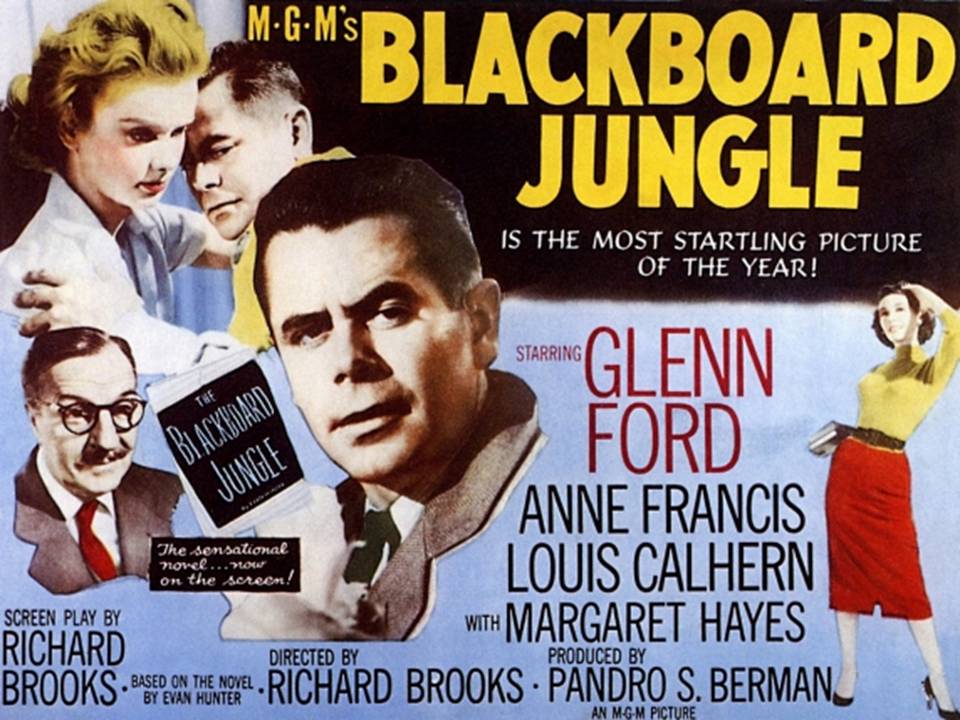
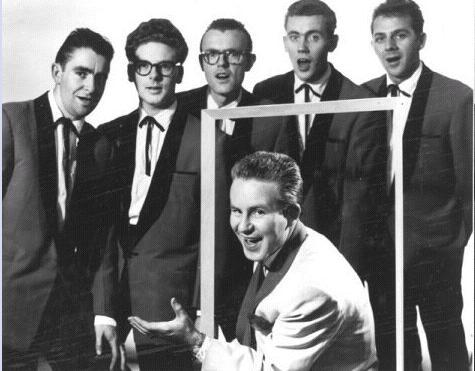


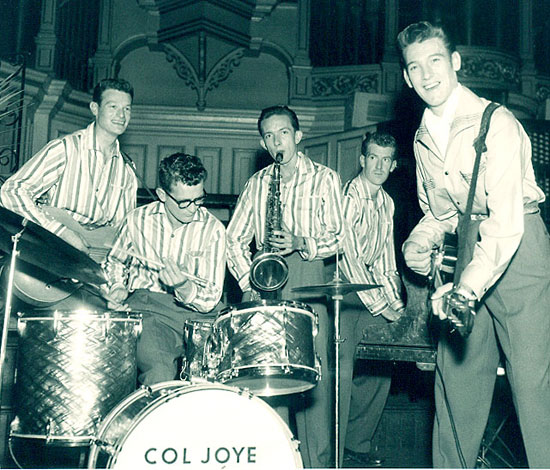
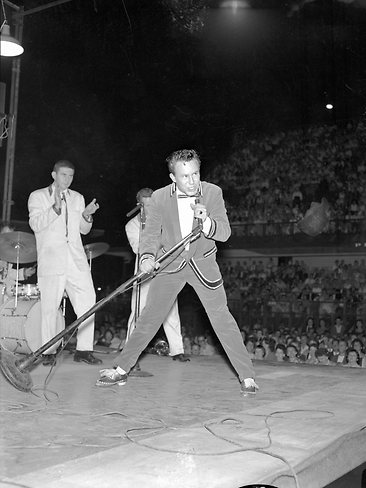
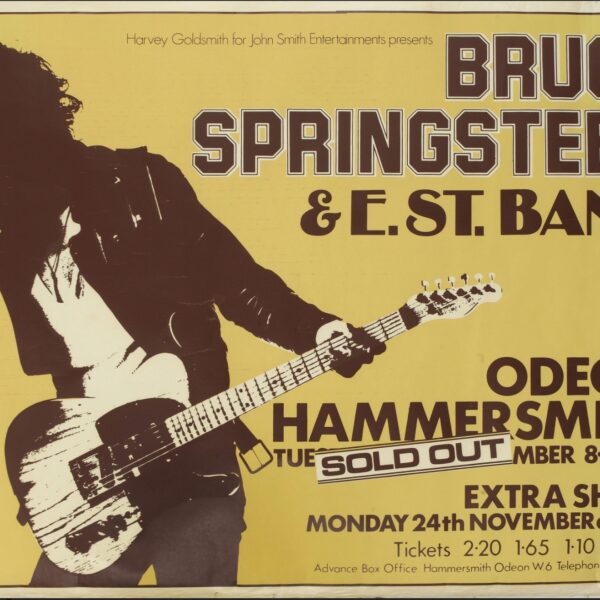
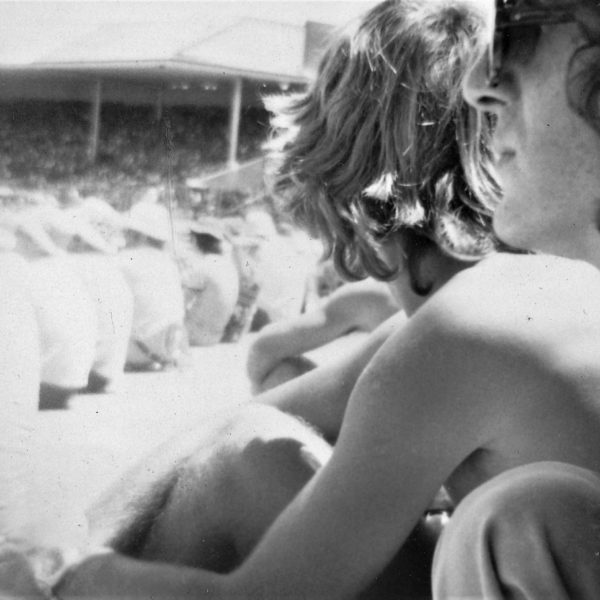

there seems to be lack of info in the early sixties ( prior to the beatles , twilights etc.)
Hi Peter – did you look at this – JOK, instrumental groups, the surf sound? https://wp.me/p4Nzc1-kA
Great to see cool photos and interesting aspects of early Aussie Rock. I’m from Brisbane Queensland but as a kid in Sydney 1972 i remember my parents coming home from the Coogee-Randwick RSL with an autographed copy of Johnny O’Keefe record.
I recall two songs on the album ‘SHE WEARS MY RING’ and ‘I’m Counting On You’.
Excelente material de documentación para apreciar la historia musical de Australia, desde mi punto de vista, me atrae muchísimo pues de alguna manera es el entorno de ese escenario musical que los Bee Gees, la banda británica encontró, y en la cual, en corto tiempo logró llegar a ser uno de sus protagonistas esenciales.
Muchas gracias Martha!